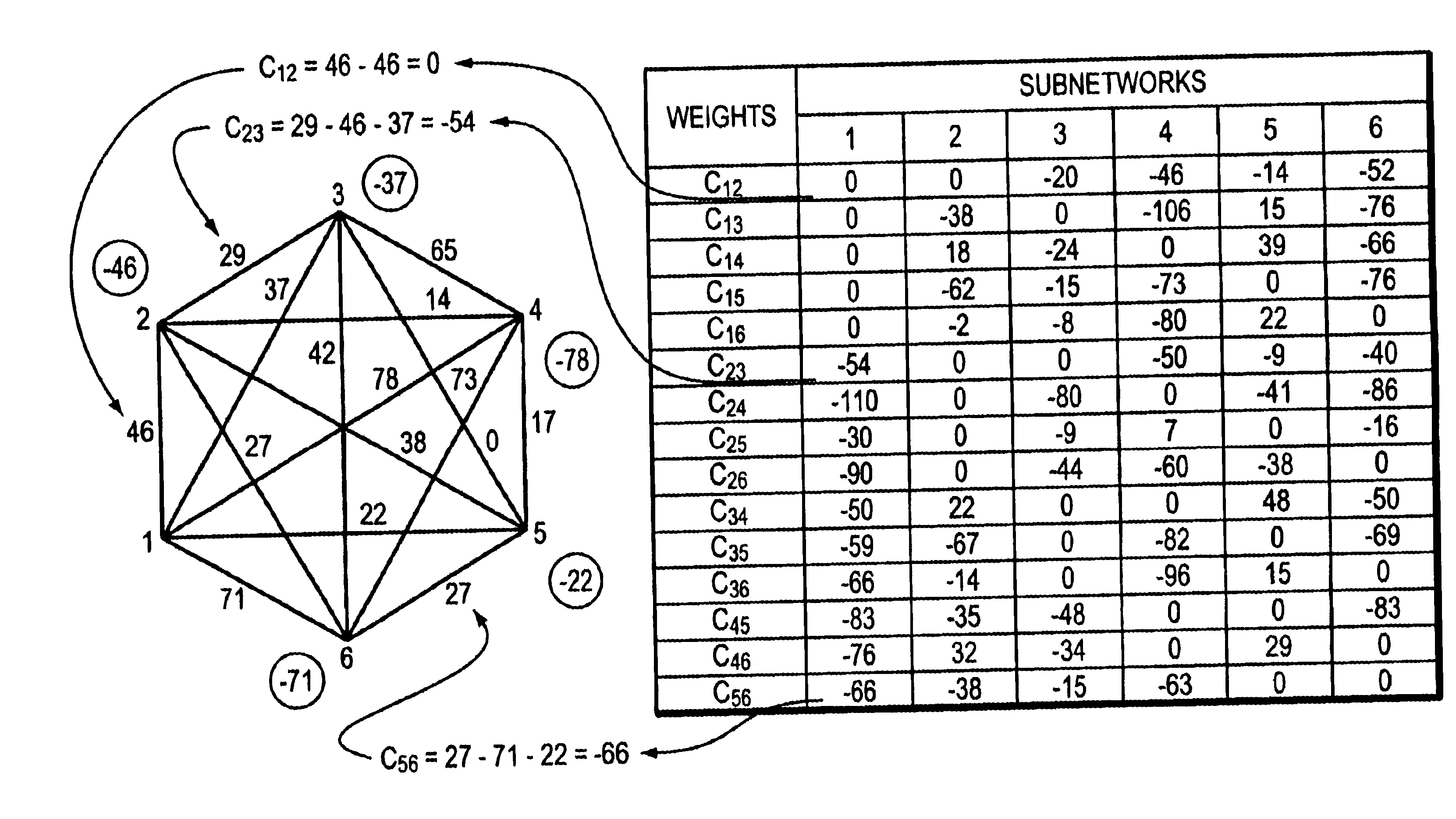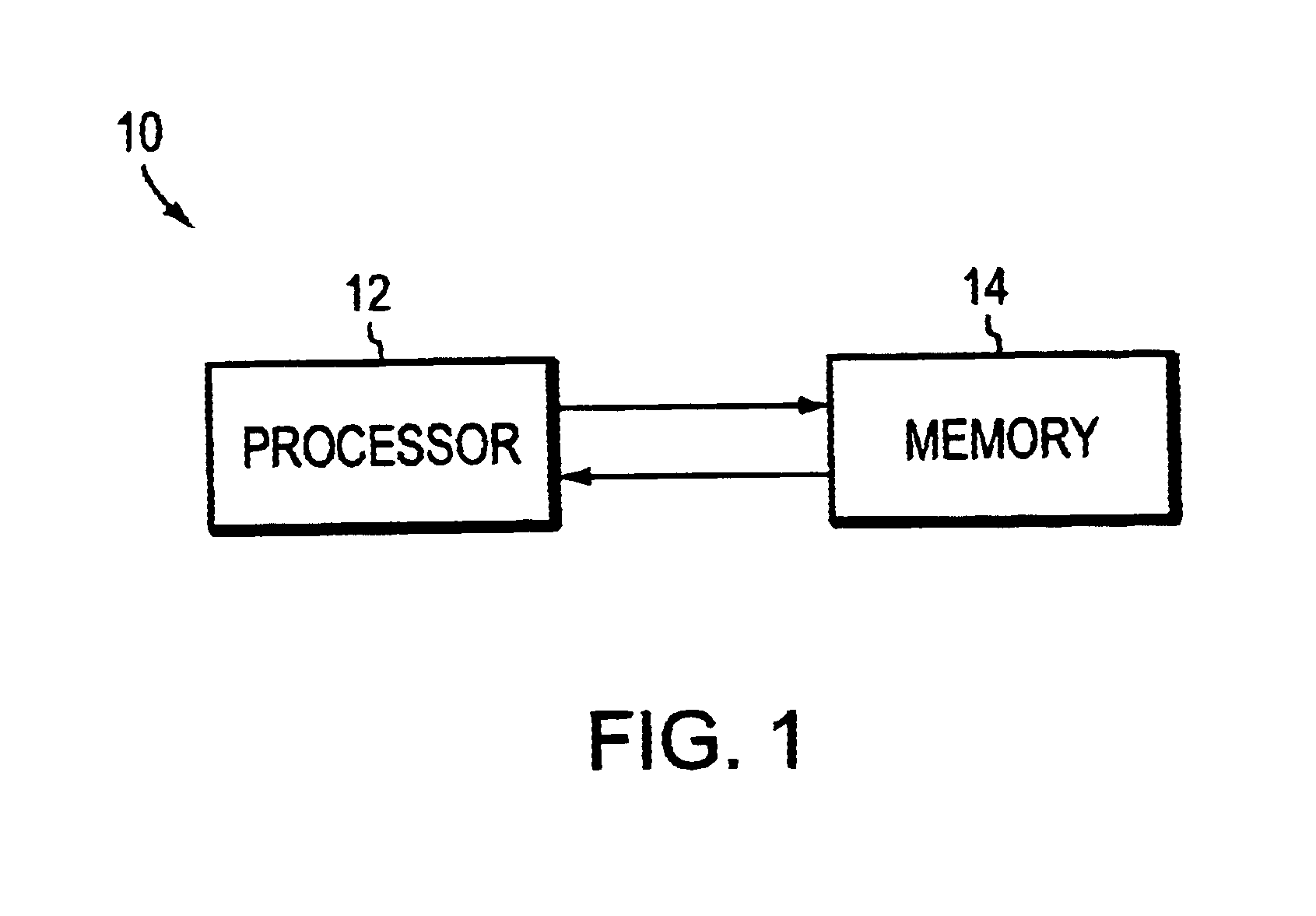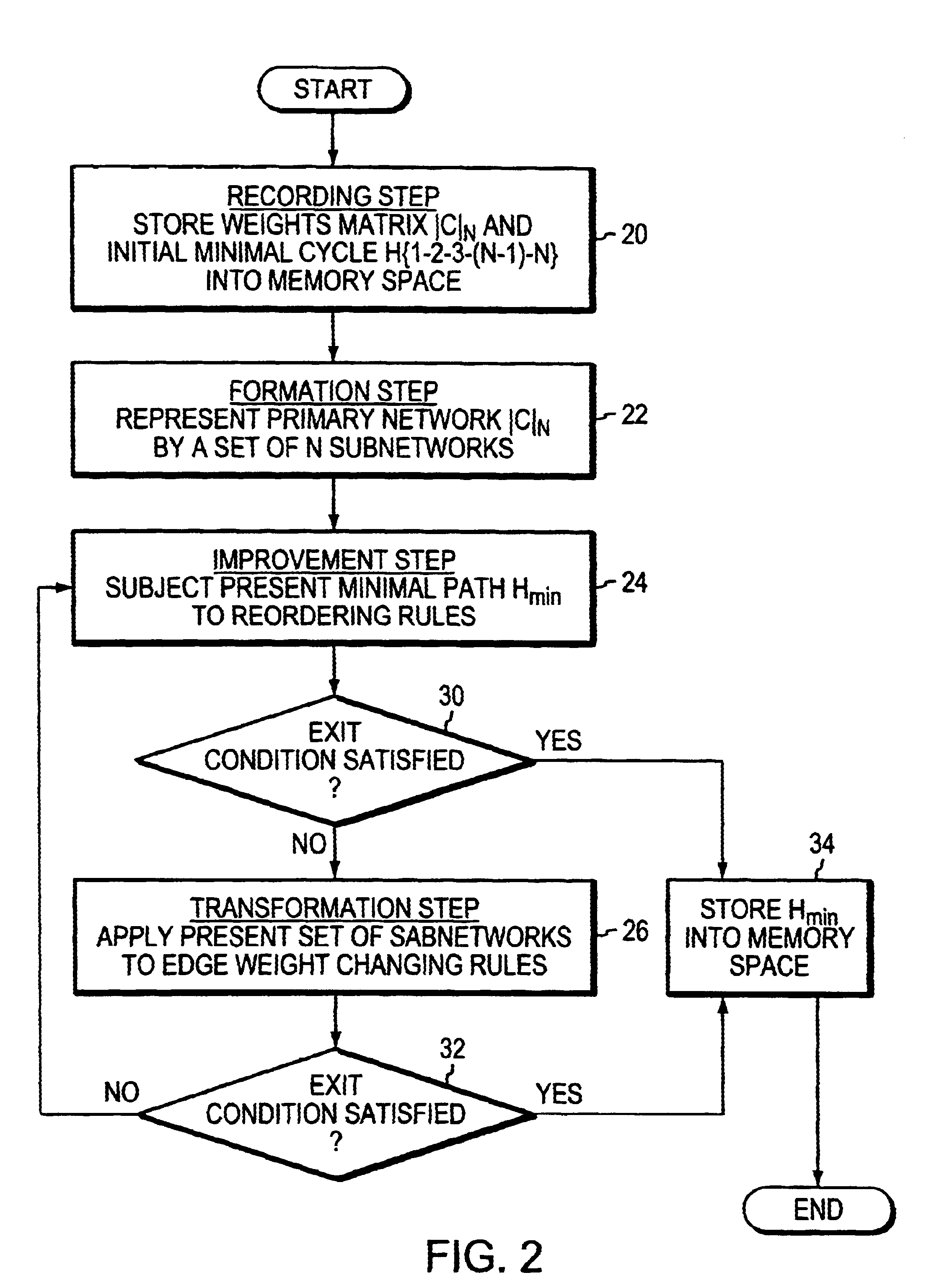Computer system configured in support of solving NP-complete problems at high speed
a computer system and high-speed technology, applied in the field of computer systems, can solve problems such as the inability to rely on systems, the inability to find the minimum hamiltonian cycle by method, so as to reduce the computational time, reduce the degradation of computer components, and reduce the computational time
- Summary
- Abstract
- Description
- Claims
- Application Information
AI Technical Summary
Benefits of technology
Problems solved by technology
Method used
Image
Examples
example 2
To solve the Traveling Salesman Problem, the computer is designed as shown in FIG. 1. The Intel.RTM. Pentium Pro.RTM. processor, 200 MHZ, 512 KB cache, is used.
The network consists of 50 USA capital cities and Washington, D. C. (the between-cities distances have been determined with the aid of US Atlas, v. 4.0.COPYRGT., developed by The Software Tool Works, Inc. and Electro Map, Inc.). The distances are given in the table of FIG. 11. It should be noted that the rule of triangle for the found between-cites distances is not fulfilled in 245 cases.
It is required for the network given to find the minimum Hamiltonian cycle (solve the Traveling Salesman Problem).
The salesman's optimum route is:
Albany-Harrisburg-Charleston-Columbus-Frankfort-Indianapolis-Lansing-Madison -Springfield-Jefferson City-Topeka-Lincoln-Des Moines-St. Paul-Bismarck-Pierre -Cheyenne-Denver-Salt Lake City-Helena-Boise-Salem-Olympia-Juneau-Honolulu -Sacramento-Carson City-Phoenix-Sante Fe-Oklahoma-Austin-Baton Rouge-...
example 3
To solve the problem of the existence of a Hamiltonian cycle in graph, the computer is designed as shown in FIG. 1. The Intel.RTM. Pentium Pros processor, 200 MHZ, 512 KB cache, is used.
The graph of 50 nodes is given by a weights matrix. The edges belonging to the graph are of zero weight; those, complemented to be strongly connected, have the weight equal to 1. The graph is given with the help of the generator of random numbers (with the fixed maximum values of its nodes' degree equal to 4). The weights of the graph are given in the table of FIG. 12.
It is required for the graph given to:
find if a Hamiltonian cycle exists in it (if yes, what is);
find if other Hamiltonian cycles exist.
Found:
The cycle in the graph:
1-21-48-26-41-44-36-43-17-38-30-22-34-42-6-45-46-19-40-18 -32-31-29-20-16-39-12-15-2-50-8-9-24-5-7-3-49-25-27-47-33 -35-14-4-13-23-28-11-10-37-1;
In the graph there exist other Hamiltonian cycles;
the computer running time: less than 0.075 sec.
example 4
The computer system of FIG. 1 is configured to solve a Hamiltonian cycle in graph type problem. Processor 12 is provided by a Intel.RTM. Pentium Pro.RTM. processor having 200 MHZ, 512 KB cache and 64 MB RAM.
Using the random digits generator there were realized graphs; for each of five values of the total number of graph nodes N+25, 50, 100, 200 and 400 there were realized 50 random graphs. Then for each of these graphs, there was solved the problem of existence of the Hamiltonian cycle in the graph, using the method according to the invention. In the following table for each of five values N there is given the maximal (across the ensemble of 50 realizations) duration of computer time t, spent for the corresponding problem solution:
All of the maximal time values were realized in the cases where the graph lacked the Hamiltonian cycle. If the Hamiltonian cycle was available, the time spent for computations was much shorter.
PUM
 Login to View More
Login to View More Abstract
Description
Claims
Application Information
 Login to View More
Login to View More - R&D
- Intellectual Property
- Life Sciences
- Materials
- Tech Scout
- Unparalleled Data Quality
- Higher Quality Content
- 60% Fewer Hallucinations
Browse by: Latest US Patents, China's latest patents, Technical Efficacy Thesaurus, Application Domain, Technology Topic, Popular Technical Reports.
© 2025 PatSnap. All rights reserved.Legal|Privacy policy|Modern Slavery Act Transparency Statement|Sitemap|About US| Contact US: help@patsnap.com



